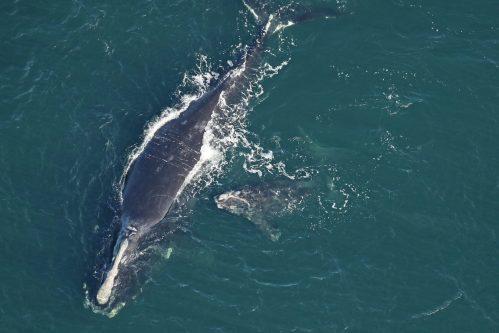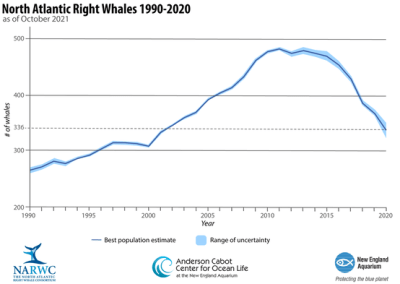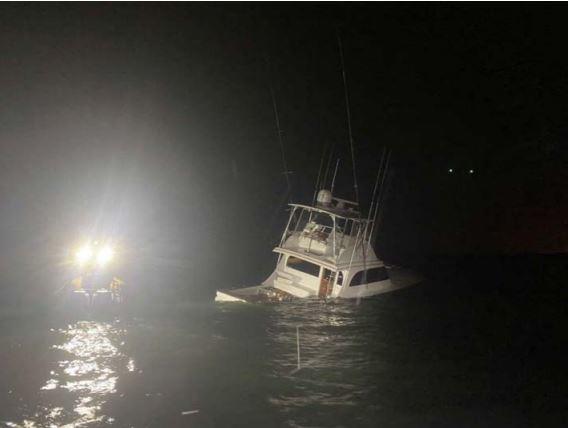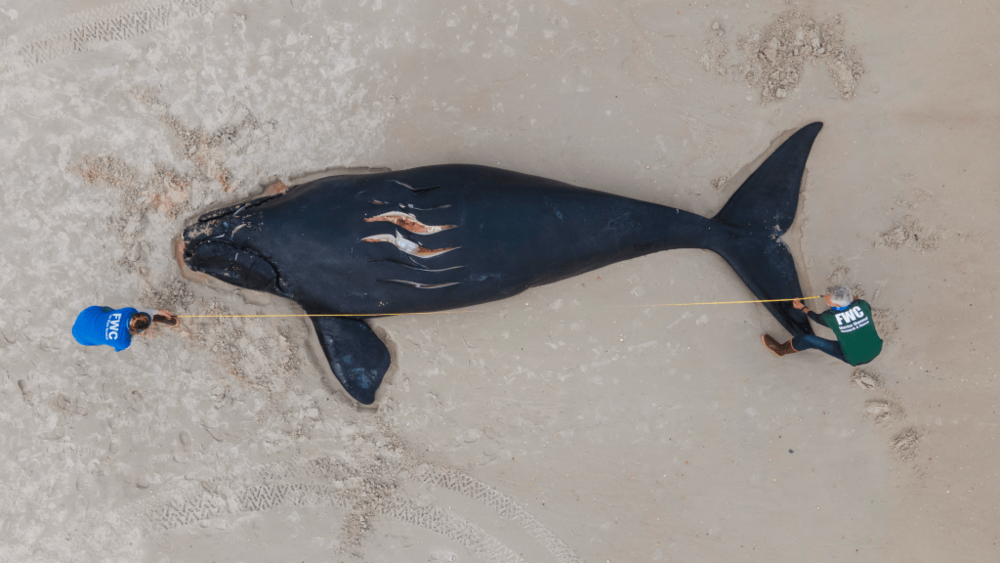
Caption
First-time mother, Catalog #3230 ‘Infinity’, was 19 years old and the oldest daughter of #2040 ‘Naevus’. Naevus has produced three adult female calves and all three gave birth last winter (#3230 Infinity, #3520 Millipede, #3860 Bocce)! Millipede gave birth to her first calf in 2013 and Bocce gave birth to her first calf in 2016, but both calves are presumed dead. Infinity's calf died in a boat strike.
Credit: Florida Fish and Wildlife Conservation Commission, taken under NOAA permit 20556-01




